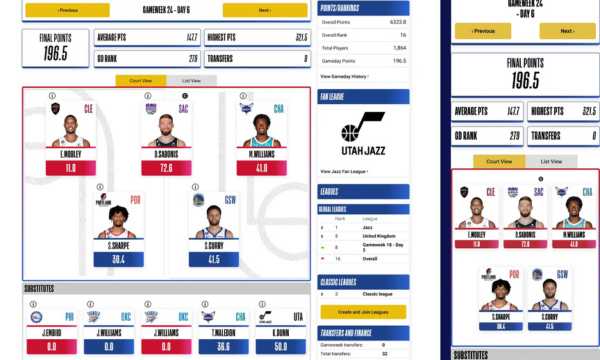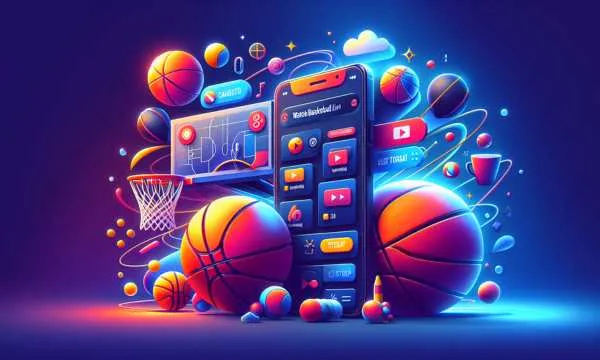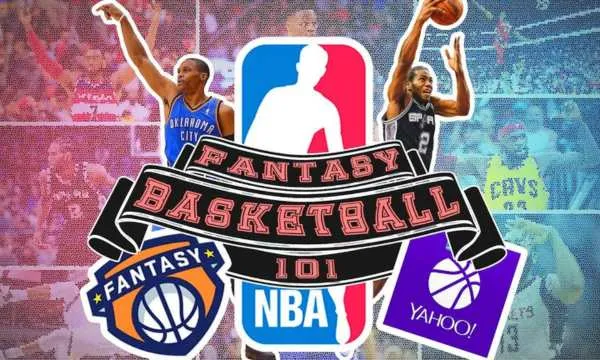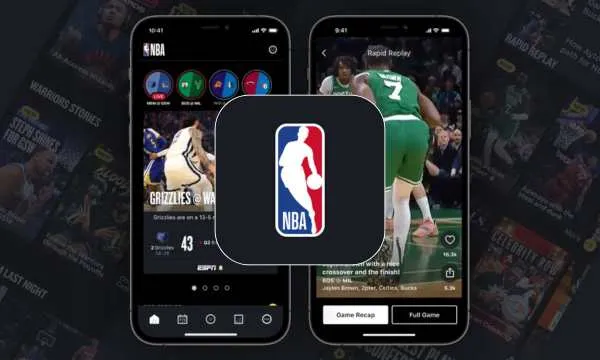NBA Fantasy: What It Is and How to Build a Championship Team
The NBA Fantasy transforms any basketball fan into a coach and director, allowing you to create and manage your own dream team.
Ad
In this virtual game, your decisions determine victories or defeats based on the real performance of players on NBA courts.
Millions of people around the world participate in this experience that deepens the connection with professional basketball.
Whether you’re a curious beginner or a veteran looking to improve your skills, this article will reveal the secrets to building a championship team in NBA Fantasy.
Get ready to discover strategies, tips, and fundamental concepts to dominate your league.
1. Get to Know NBA Fantasy Before Starting
NBA Fantasy is an online game where you build a virtual team with real NBA players and compete against other participants.

NBA Game Interface (Google Source)
Your score is based on the real statistics of the players you’ve chosen for your roster.
Unlike other games, Fantasy requires continuous knowledge about what’s happening on the courts of the American basketball league.
The most popular platforms for playing are ESPN, Yahoo Sports, and NBA.com, each with small variations in the rules.
The NBA Fantasy season usually begins with the “draft,” where participants select their players, and ends during the NBA playoffs.
Between these moments, you’ll have to make constant adjustments to your team to maximize its performance.
Basic components of Fantasy:
- A team with approximately 13 players.
- Specific positions to be filled (PG, SG, SF, PF, C).
- Scoring system based on real statistics.
- Weekly or cumulative competition against other participants.
- Trade market and free agents.
The most interesting aspect of the game is that it deepens your experience as a basketball fan.
You’ll start watching games of teams you normally wouldn’t follow just to see how your players are performing.
2. Understanding the Scoring System
The heart of NBA Fantasy lies in its scoring system, which transforms players’ actions on the court into points for your virtual team.
Fantasy leagues generally use two main scoring models: the category system and the points system.
Understanding how each works is fundamental to developing efficient strategies.
In the category system, you compete in multiple statistics such as points, rebounds, assists, ball possessions, blocks, three-point shots, field goal and free throw percentages.
The winner is whoever outperforms the opponent in the most categories.
In the points system, each action has a predetermined value, adding up to a total that determines the winner of the matchup. Example of scoring in the points system:
- Points scored: 1 point each.
- Rebounds: 1.2 points each.
- Assists: 1.5 points each.
- Steals: 3 points each.
- Blocks: 3 points each.
- Turnovers: -1 point each.
The platforms allow commissioners to customize the scoring systems, creating unique variations. Some leagues value shooting efficiency more, while others prioritize defensive statistics.
Before joining any NBA Fantasy league, carefully study the scoring system to align your draft strategy and team management.
3. Types of NBA Fantasy Leagues: Head-to-Head or Rotisserie?
The two main formats are Head-to-Head (H2H) and Rotisserie (also called “Roto”), plus the points system that can be applied to both.

Game Format and Structure (Google Source)
In the Head-to-Head format of NBA Fantasy, you face a different opponent each week, competing for statistical categories or total points.
This format creates exciting direct confrontations, similar to real NBA playoffs.
The strategy in H2H often involves “to believe” specific categories, sacrificing some to maximize your chances of weekly victory.
In the Rotisserie format, you compete against the entire league simultaneously throughout the season.
Your position in each statistical category determines points in the overall standings, requiring a balanced team without major weaknesses.
Consistency is the key in Roto, while H2H allows strategic “all or nothing” weeks.
Main characteristics of the formats:
Head-to-Head
- Weekly direct matchups against an opponent.
- Playoffs at the end of the regular season.
- Allows short-term strategies and specialization in categories.
- More impacted by injuries and game schedule.
Routisserie Format
- Continuous competition against the entire league.
- Cumulative scoring throughout the season.
- Requires teams well-balanced in all categories.
- Less impacted by weekly performance variations.
Some players prefer the Points format, where all statistics are converted into a single value, simplifying performance evaluation.
4. How to Prepare for the NBA Fantasy Draft
The draft is the most critical moment of the NBA Fantasy season, establishing the foundation of your team for the months ahead.
Proper preparation can make all the difference between finishing as champion or in last place.
- Researching updated rankings of specific players is essential, but don’t blindly trust pre-made lists.
- Develop your own ranking considering your league’s scoring system.
- Keep up with news about injuries, trades, and changes in team rotations, as these directly affect the value of players in Fantasy.
- Participating in “mock drafts” (simulations) is an excellent way to practice your strategy and familiarize yourself with the pace of the real draft.
These simulations help identify which round certain players are being selected in, preventing you from choosing someone too early or missing a target by waiting too long.
Don’t underestimate the value of knowing your draft position. Selecting at the beginning, middle, or end of the order significantly affects your strategy.
With good preparation for the draft, you build the foundation necessary for a successful season.
You can find out more details on the platform’s website.
5. Winning Draft Strategies: Building Your Team’s Foundation
There are various approaches to the NBA Fantasy draft, but some strategies consistently produce superior results.
The “best player available” (BPA) strategy suggests always selecting the most talented athlete regardless of position, especially in the early rounds.
Alternatively, the “positional scarcity” strategy prioritizes players in positions with fewer available talents.
In category-based Fantasy leagues, the “punting” strategy involves deliberately ignoring one or two categories to dominate the others.
For example, giving up free throw percentage allows you to select dominant centers who would normally have that weakness, like Giannis Antetokounmpo or Rudy Gobert.
Balancing safety and potential is crucial in the draft. Your first picks should prioritize consistent players with proven track records, leaving riskier bets for intermediate rounds.
Specific strategies for different draft positions:
Early picks (1-4)
- Select versatile superstars like Nikola Jokic or Luka Doncic.
- Focus on players who contribute in multiple categories.
- Avoid one-dimensional specialists in the first round.
Middle picks (5-8)
- Consider the “punt” strategy in one category.
- Look for players with high “upside” who can perform like early picks.
- Be alert for values that fell unexpectedly.
Late picks (9-12)
- Take advantage of close choices (double picks).
- Consider complementary player combinations.
- Be more bold with high risk/high reward bets.
Be prepared to adjust your strategy as the draft progresses, adapting to your opponents’ choices and taking advantage of unexpected opportunities.
6. How to Manage Your Team Week by Week
Continuous success in NBA Fantasy depends on active management of your roster throughout the season.
Analyzing the NBA weekly schedule is fundamental, as an average player with four games can outperform a star with only two.
Setting your daily or weekly lineup requires attention to favorable and unfavorable matchups.
A point guard facing the league’s worst defense against his position presents greater potential than facing the best.
Fantasy specialized sites provide updated rankings on which teams concede the most statistics in each category.
Following pre-game reports, interviews with coaches, and profiles of specialized journalists provides valuable information about player availability. Essential weekly tasks:
- Check the number of games for each player.
- Analyze favorable and unfavorable matchups.
- Monitor injury status and scheduled rest.
- Evaluate players available on the “waiver wire.”
- Observe trends in minutes and role in rotations.
- Consider specific strategies against your opponent (in H2H leagues).
Consistency in weekly management often outperforms draft quality. Stay informed through podcasts, specialized articles, and analytical tools to maximize your team’s performance.
7. Waiver Wire: Find the Best for Your Team
The “waiver wire” (list of available players) functions as a constant source of talent for your NBA Fantasy team throughout the season.
Monitoring this list daily can reveal valuable players overlooked by other participants.
Often, the season’s biggest transfers come from the waiver wire, not trades between teams.
In Fantasy, opportunities constantly arise due to starter injuries, rotation changes, or players who simply exceed expectations.
Players who take over starting roles after star injuries frequently become significant contributors.
Success on the waiver wire depends on your ability to act quickly before other managers.
Use waiver priority orders strategically, saving high positions for truly impactful additions.
Adding and dropping players to maximize the number of games (streaming) is an advanced tactic, especially useful in leagues with weekly acquisition limits. This approach allows you to significantly increase the volume of accumulated statistics.
When considering dropping players from your team, evaluate their recent performance beyond reputation or theoretical potential.
Many managers make the mistake of keeping famous names that are clearly in decline.
8. Negotiate Like a Pro
Trades represent one of the most powerful tools to improve your NBA Fantasy team during the season.
Successful negotiations require skill in identifying mutual needs and appropriate timing.
The best time to propose trades is usually after an exceptional sequence from one of your players, when their value is at its peak.
Before proposing any trade, carefully analyze the other manager’s team to identify their needs and surpluses.
A proposal that benefits both teams is much more likely to be accepted than obvious attempts to “win” the negotiation.
Players with complementary statistics frequently represent perfect opportunities for mutually beneficial trades.
Be patient and professional in negotiations, avoiding bombarding other managers with constant proposals. Include messages explaining the reasoning behind the offer, highlighting how it could benefit the other team.
Trades involving multiple players can create value when properly combined, but increase the complexity of evaluation.
Avoid rejecting offers instantly, even those that seem bad. Use them as an opportunity to initiate dialogues that can lead to mutually beneficial trades.
Considering the significant differences in perception of value between managers, creative negotiations frequently unlock important improvements for your team.
9. Path to the Top: 5 Tips to Improve Your Game
Elevating your NBA Fantasy game to the next level requires attention to details that most managers ignore.
1. Think ahead
- Anticipate the NBA schedule weeks in advance
- Identify players with favorable schedules during fantasy playoffs
- Prepare to add “sleepers” before they become trends
2. Overcome your Concepts
- Avoid favoritism for players from your preferred team
- Base decisions on objective data, not reputation
- Recognize when an established player is declining
3. Maximize each roster spot
- Strategically utilize “streaming” positions
- Consider specialists in specific categories for strategic niches
- Evaluate each player’s impact in the complete context of your team
4. Master the psychological aspect
- Understand the trends and preferences of other managers
- Use deadlines as leverage in negotiations
- Maintain a long-term perspective in moments of frustration
5. Use analytical tools
- Explore resources like Basketball Monster or HashBasketball
- Compare efficiency by category in specific formats
- Visualize data to identify non-obvious patterns
NBA Fantasy rewards managers who adapt their tactics based on evidence, not on emotional commitments to players or strategies.
Conclusion
Through the strategies, tips, and concepts we’ve explored, you now have the tools necessary to compete at the highest level.
Remember that the most important element for success in NBA Fantasy is the consistency of your involvement throughout the season.
The game rewards both meticulous preparation and the ability to make quick adjustments when necessary.
There’s no single formula for winning – find the approach that best fits your style and knowledge.
Above all, keep NBA Fantasy fun and engaging.
Celebrate your victories, learn from your defeats, and enjoy the journey that brings you closer to the nuances of professional basketball.
 Watch Live Basketball: Best Streaming Apps
Watch Live Basketball: Best Streaming Apps
Remember when catching a game meant rearranging your entire evening around cable schedules? Live basketball streaming changed that forever. Ad Today, you can watch live basketball […]
Keep reading NBA Fantasy: Best Apps to Build and Manage Your Champion Team
NBA Fantasy: Best Apps to Build and Manage Your Champion Team
NBA fantasy turns real games into a strategic, data-driven adventure where you manage a roster, make smart moves, and enjoy friendly competition. Ad In this article, […]
Keep reading NBA App: Watch Live Games & Highlights
NBA App: Watch Live Games & Highlights
The NBA App has evolved into a powerful hub for fans seeking live action, quick highlights, and original stories that bring the league closer than ever. […]
Keep reading